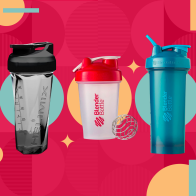Should You Be Worried About Mercury in Fish?
Here’s what to consider when incorporating seafood regularly into your diet.

© eleonora galli/Getty Images
Mercury is a naturally occurring element in the environment. Through industrial pollution, it can be released into the air and land, in streams and oceans, where it accumulates and is turned into methylmercury in the water. Fish absorb the methylmercury as they feed in these waters and over time, it can build up in fish. Methylmercury builds up more in some types of fish and shellfish, depending on what each fish eats. That’s why certain types of fish tend to contain higher or lower mercury levels.
Eating a lot of high-mercury fish can be harmful, especially to a developing fetus and young children. However, eating fish can also come with several health benefits.
Weighing these factors, how much fish, and what type of fish, should you be eating?
How Much Fish Should You Eat?
Since the late 1990s, the Food and Drug Administration (FDA) has warned that eating too much high-mercury fish can lead to neurological damage, especially to young children and unborn babies. The following are the FDA’s recommendations for pregnant and nursing people, those of child-bearing age and children ages 1 to 11 years old.
Pregnant, nursing and people who might become pregnant:
- At least eight ounces (or two 4-ounce servings) of seafood per week based on a 2,000-calorie diet
- Those who are pregnant or breastfeeding should consume between eight and 12 ounces per week of a variety of seafood from choices that are lower in mercury
Children ages 1-11 years:
- Two servings a week of fish and seafood that are low in mercury
- On average, a serving is about:
- Ages 1-3 years: One ounce
- Ages 4-7 years: Two ounces
- Ages 8-10 years: Three ounces
- Age 11 years: Four ounces
What Types of Fish Are High and Low in Mercury?
Low-mercury fish and seafood choices include anchovy, Atlantic croaker, Atlantic mackerel, black sea bass, butterfish, catfish, clam, cod, crab, crawfish, flounder, haddock, hake, herring, lobster (American and spiny), mullet, oyster, Pacific chub, mackerel, freshwater and ocean perch, pickerel, plaice, Pollock, salmon, sardine, scallop, shad, shrimp, skate, smelt, sole, squid, tilapia, freshwater trout, canned light tuna (includes skipjack), whitefish and whiting.
High-mercury fish should be avoided by pregnant and nursing people, people who may become pregnant and kids ages 1-11 years. These include king mackerel, marlin, orange roughy, shark, swordfish, tilefish (from the Gulf of Mexico) and bigeye tuna.
The FDA also addresses fish caught by family and friends. If anyone listed above is eating said fish, check local advisories for how often they can safely eat those fish. If there is no advisory, then only one serving of fish should be eaten that week and no other fish that week. Some fish caught by friends and family, like larger carp, catfish, trout and perch are more likely to have fish advisories because of mercury and other contaminants.

Oscar Wong/Getty Images
What Are the Health Benefits of Eating Fish and Seafood?
Despite the risk of mercury, pregnant and nursing people, those who may become pregnant and kids ages 1 to 11 years old should still include seafood mindfully in their diets, as it provides key nutrients that support a child’s brain development. These nutrients include omega-3s (DHA and EPA) and omega-6 fats, iron, iodine (especially during pregnancy) and choline.
Nutrients found in fish also help with children’s development and support other functions in the body. For example, choline also helps support the development of a baby’s spinal cord. Iron and zinc found in fish supports a child’s immune system. Fish also provides important nutrients including protein, vitamin B12, vitamin D and selenium.
Fish provides an array of other benefits, too. There is strong scientific evidence that shows that eating fish, as part of a healthy diet, can offer heart health benefits. In addition, moderate scientific evidence shows that a diet relatively higher in fish, vegetables, fruits, legumes, whole grains, low- or non-fat dairy, lean meats and poultry, nuts and unsaturated vegetable oils; and lower in red and processed meats, sugar-sweetened foods and beverages (like sodas), and refined grains are associated with a promotion of bone health, decreased risk in becoming overweight or obese and a decreased risk of colon and rectal cancers.
The Bottom Line
The FDA’s warning to avoid high-mercury fish is specifically for pregnant and nursing people, those who may become pregnant and kids ages 1 to 11 years. It is important, however, for these people to keep fish in their diet as it provides several health benefits. The FDA provides more information about mercury and fish here if you want to learn more.
Related Content:
































